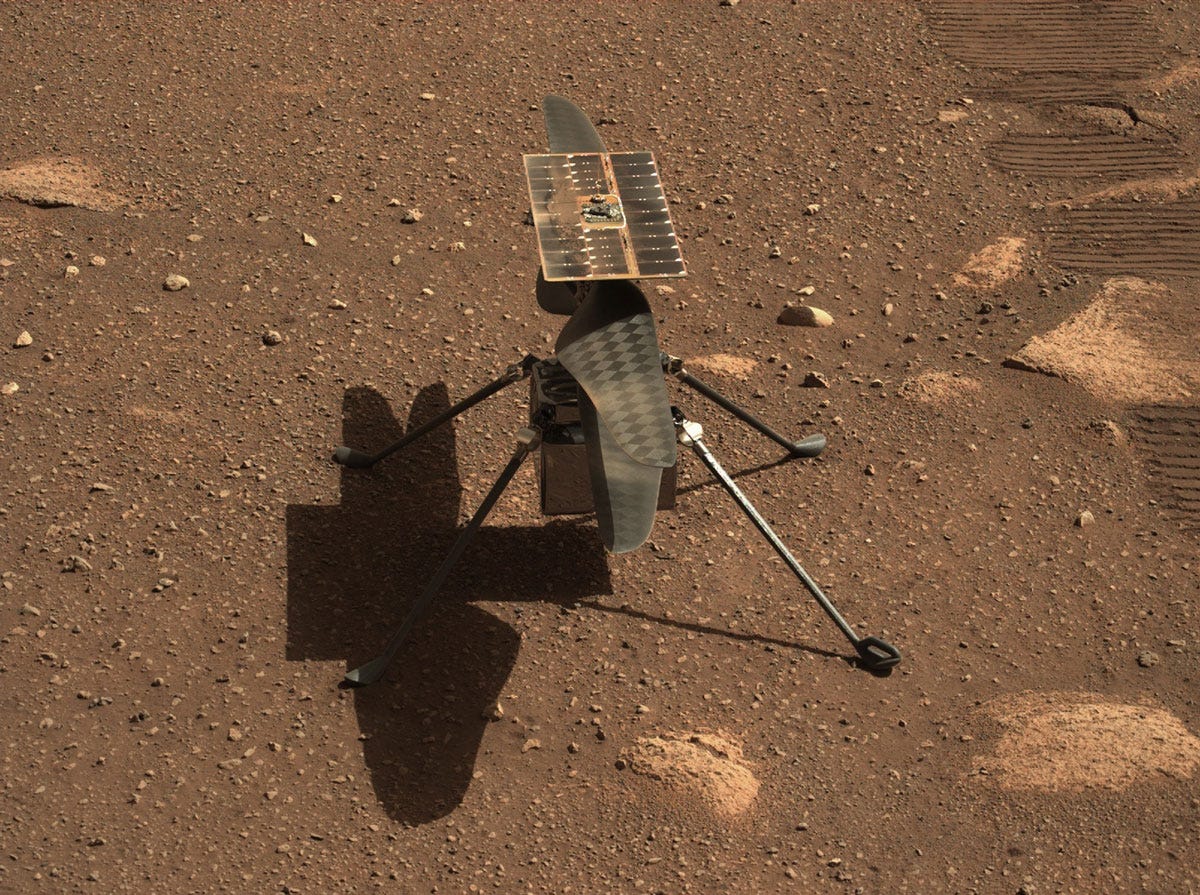Issue16: MSR's roboarm, discovery of "patchy" proton aurora, presence of aqueous minerals is so common & much more
Missions
MSR's sophisticated robot: An Italian Aerospace company, Leonardo takes up the charge of designing, manufacturing, and testing the Sample Transfer Arm for Mars Sample Return mission. The 2.5 m long arm with high locomotive skills will extract the sample tubes from the Perseverance rover, pick them up from the ground & insert them safely into the container.
Alongside, MSR team is busy in modelling prototypes as the 12-months long design phase is about to begin in the October.
Ingenuity soars once again in the Martian sky: After 101 sols of winter, copter checked its health and took its 56 seconds long repositioning flight, Flight 31 on the 6th of September. In the following weeks, copter will continue to pave its way to the Jezero river delta.
Ingenuity working for MSR: Before its Flight 31, Ingenuity had taken two test flights on August 6 and 15. By taking two short hops, helicopter allowed MSR team to take a deep note on its ability to approach a landing site.
MOXIE's most productive run: Till now, Percy's MOXIE instrument has completed 11 runs on the planet. But this time, it has produced 10.5 grams of oxygen in an hour; breaking all of its previous
records!
Research & Observations
Holden basin has witnessed planet's watery past: Mars Express Orbiter has captured Holden basin which is full of evidences indicating planet's watery past! Basin is part of Uzboi-Ladon-Moravo (ULM) outflow system who once holded 9% of planet's surface water

Aqueous minerals are so common! : High resolution spectral imaging by MRO & MEX helped us locate sites with abundant aqueous minerals. A new water map shows that these minerals are present in 100s of 1000s of areas within the oldest parts of the planet. John Carter, Université Paris-Saclay and Aix Marseille Université, France says,
“This work has now established that when you are studying the ancient terrains in detail, not seeing these minerals is actually the oddity.”
Water had transformed the rocks into clays and salts & we came to know that these minerals still contain water molecules! But the question is whether water was present for a long period of time or was confined to short, more intense periods…
Olivine is spanned across 70000 sq m! : Percy's PIXL instrument determined the size of the olivine grains i.e 1 - 3 mm. Having a specific rock formation with such a large size and uniform composition, require a slowing cooling environment. So, we can conclude that the magma wasn't erupting on the delta surafce at that time
Imagery
HOPE Mars orbiter discovered a new type of aurora - 'patchy' proton aurora - which illustrates how solar wind particles interact with the planet's dayside upper atmospheric particles; emitting UV light!
Recommendation
Use “Calculate the orbit of Mars” book by Jane Clark who calculated the Mars' orbit by collecting all the data through his telescope and using its simpler methods and basic knowledge of major mathematics topics!
Want Space to be easily accessible to everyone? So, Assist me to continue publishing all of my writes free for everyone…!








